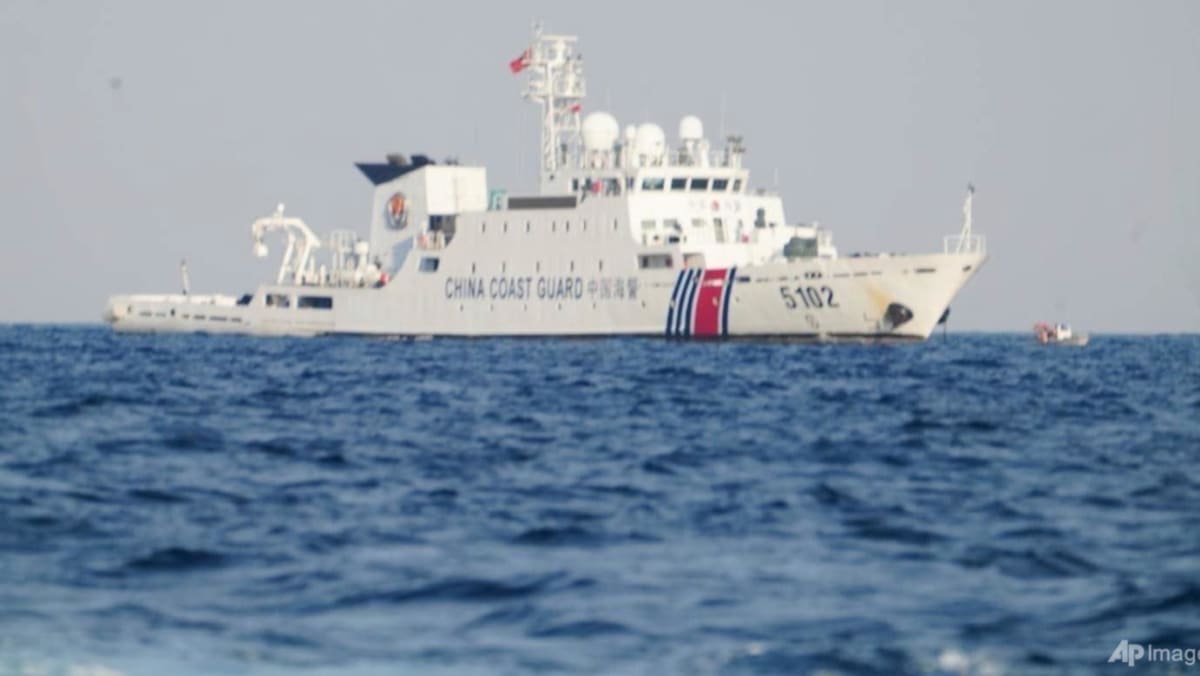Philippines Accuses China: Navy Patrols Fuel South China Sea Tensions
The South China Sea remains a hotspot of geopolitical tension, with the Philippines recently leveling accusations against China regarding increased naval patrols in the disputed waters. This escalation has reignited concerns about regional stability and the potential for further conflict. The Philippines' Department of National Defense (DND) has publicly condemned China's actions, citing these patrols as a direct challenge to Philippine sovereignty and international law.
China's Increased Naval Presence: A Cause for Alarm?
The Philippines claims that Chinese navy ships have significantly increased their presence within the Philippines' exclusive economic zone (EEZ), particularly around the Spratly Islands. These patrols, according to the DND, are not only provocative but also represent a violation of the 2016 arbitral ruling by the Permanent Court of Arbitration, which invalidated China's expansive nine-dash line claim in the South China Sea.
- Increased frequency: Reports indicate a marked increase in the frequency and duration of Chinese naval patrols.
- Intimidation tactics: Allegations of intimidation tactics employed by Chinese vessels against Philippine fishing boats and coast guard assets have also surfaced.
- Military build-up: The DND has also expressed concern over China's ongoing military build-up in the region, including the construction and fortification of artificial islands.
This heightened activity underscores the ongoing struggle for control of valuable resources and strategic waterways in the South China Sea. The region is rich in fishing grounds, potential oil and gas reserves, and vital shipping lanes, making it a crucial area for global trade and economic activity.
The Philippines' Response and International Implications
The Philippine government has responded firmly, condemning China's actions and reiterating its commitment to defending its sovereign rights. This includes:
- Diplomatic protests: Formal diplomatic protests have been lodged with the Chinese government.
- Strengthened alliances: The Philippines has also sought to strengthen its alliances with key regional and international partners, including the United States and its allies within ASEAN (Association of Southeast Asian Nations).
- Enhanced maritime capabilities: Investment in modernizing its naval capabilities is also underway to better monitor and respond to future incursions.
The ongoing tensions have significant implications for regional and global stability. The South China Sea is a critical waterway, and any escalation could disrupt global trade, leading to economic instability. Furthermore, the potential for miscalculation or accidental clashes between naval forces raises the specter of a wider conflict.
The Path Forward: Diplomacy and De-escalation
The international community has urged both sides to exercise restraint and engage in dialogue to de-escalate tensions. Finding a peaceful resolution is critical, and this requires:
- Adherence to international law: Respect for the 2016 arbitral ruling and adherence to the UN Convention on the Law of the Sea (UNCLOS) are paramount.
- Open communication: Open and transparent communication channels between the Philippines and China are essential.
- Regional cooperation: Greater cooperation among ASEAN member states is needed to collectively address these challenges.
The future of the South China Sea hinges on the willingness of all parties to prioritize diplomacy and de-escalation over confrontation. The continued build-up of military forces and provocative actions only serve to heighten the risk of conflict and undermine regional stability. The international community must remain vigilant and actively work towards a peaceful resolution.
Keywords: South China Sea, Philippines, China, naval patrols, tensions, Spratly Islands, EEZ, 2016 arbitral ruling, UNCLOS, ASEAN, diplomatic protests, maritime disputes, geopolitical tensions, regional stability.

